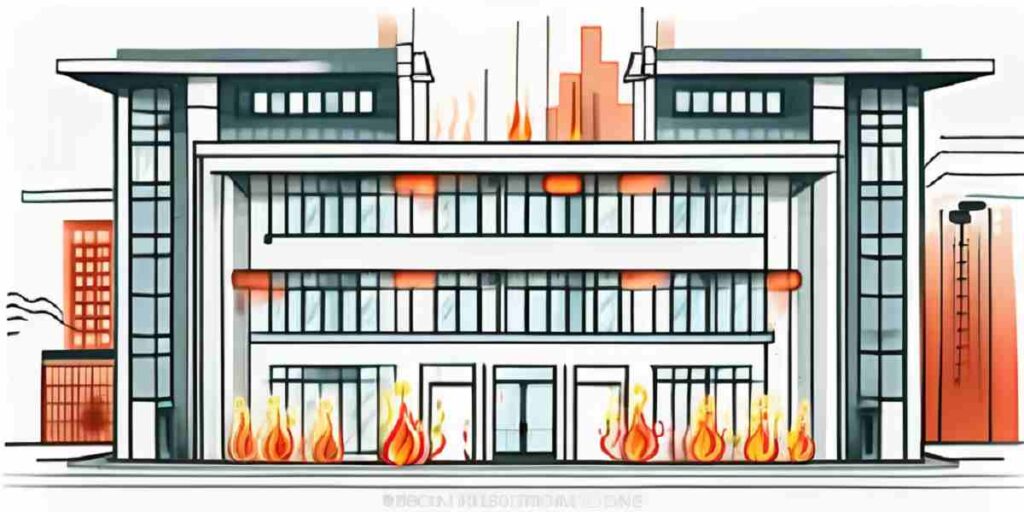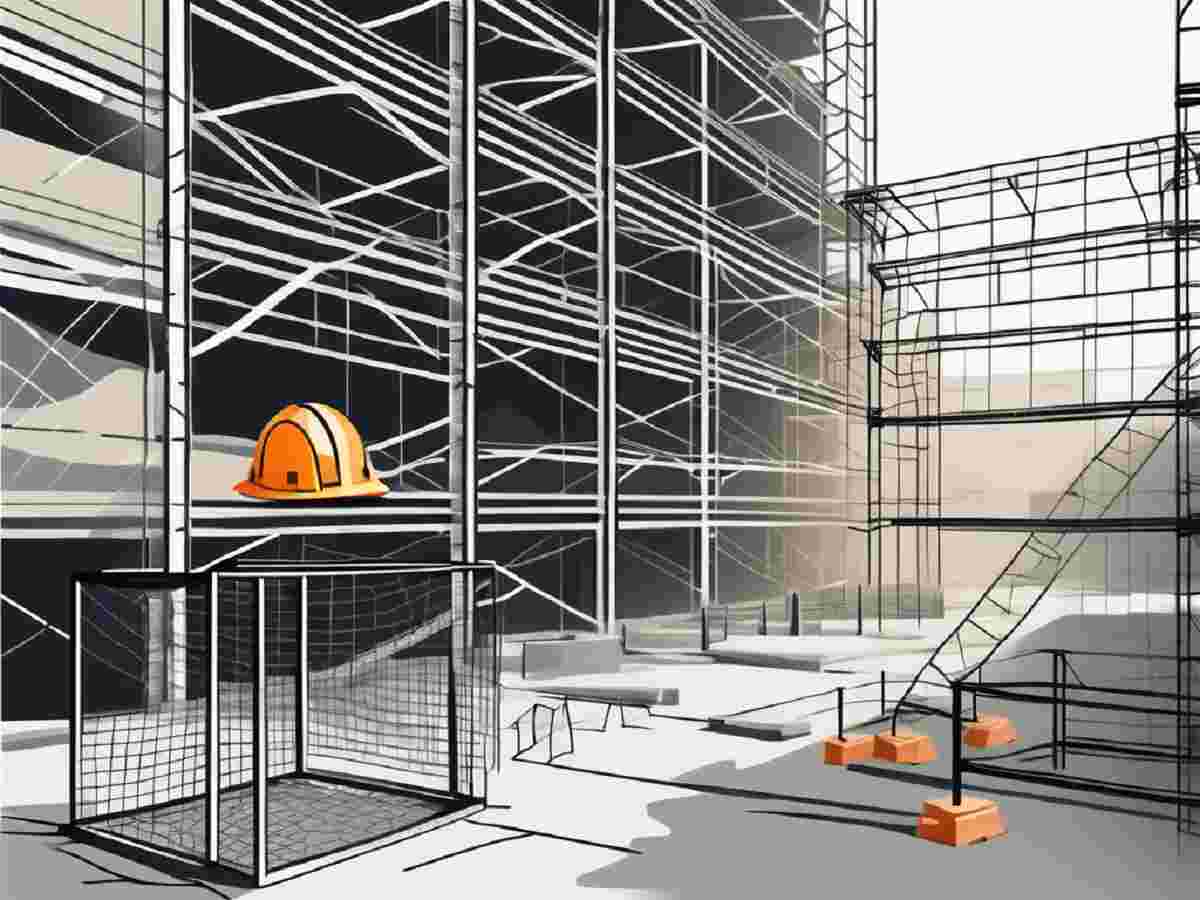The Building Safety Act 2022 represents a significant milestone in enhancing safety measures within the construction industry. This legislation, enacted to address various challenges and ensure greater accountability, introduces several provisions aimed at improving building safety standards across the board. In this article, we’ll delve into the key aspects of the Building Safety Act 2022, its implications for stakeholders, and the challenges it presents.
Table of contents
- The Importance of the Building Safety Act 2022
- Understanding the Building Safety Act 2022
- The Role of the Building Safety Act in Public Safety
- Key Provisions of the Building Safety Act
- Impacts of the Building Safety Act on Construction Industry
- Challenges and Concerns
- Regulatory Changes Brought by the Building Safety Act
- Future Prospects Under the Building Safety Act
- Conclusion
- FAQs
The Importance of the Building Safety Act 2022
The Building Safety Act 2022 is a significant piece of legislation that plays a crucial role in ensuring the safety and integrity of buildings. This act addresses various aspects of construction standards, public safety, the construction industry, regulatory changes, and future prospects. By understanding the provisions and implications of this act, we can appreciate its importance in safeguarding lives and preventing potential hazards.
Understanding the Building Safety Act 2022
The Building Safety Act 2022 is a landmark legislation that represents a significant step forward in ensuring the safety and well-being of individuals living and working in buildings. This comprehensive act not only regulates the construction industry but also places a strong emphasis on accountability and transparency throughout the building process.

One of the key aspects of the Building Safety Act 2022 is its focus on high-risk buildings. These structures, which often house a large number of occupants, are subject to stringent regulations aimed at mitigating potential risks and hazards. By implementing new safety measures and enhancing oversight mechanisms, the act seeks to create a safer environment for all building occupants.
Key Provisions of the Act
Within the Building Safety Act 2022, there are several key provisions that play a crucial role in upholding the standards of safety and quality in construction. These provisions include mandatory safety protocols, rigorous inspection processes, and clear guidelines for building owners and developers to follow. By outlining these requirements, the act aims to foster a culture of compliance and responsibility within the construction industry.
The Act’s Impact on Construction Standards
By enacting the Building Safety Act 2022, there is a notable shift towards elevating construction standards to ensure that buildings are not only aesthetically pleasing but also structurally sound and resilient. Builders are now required to adhere to strict safety regulations, conduct thorough risk assessments, and obtain certifications to demonstrate compliance with the law. This renewed focus on construction standards is essential in safeguarding against potential accidents and hazards, ultimately enhancing the overall safety of buildings.
The Role of the Building Safety Act in Public Safety
Enhancing public safety is at the core of the Building Safety Act 2022. Through its various provisions, the act aims to minimize risks and ensure that buildings are safe for occupancy. This section explores two essential aspects of public safety addressed by the act: enhancing structural integrity and implementing effective fire safety measures.

The Building Safety Act 2022 represents a significant milestone in the realm of public safety regulations. By focusing on the structural integrity of buildings and fire safety measures, the act sets a new standard for ensuring the well-being of occupants and the community at large. This comprehensive legislation takes into account the latest advancements in construction technology and safety protocols to create a robust framework that promotes resilience and preparedness.
Key Provisions of the Building Safety Act
Definition and Scope
The Building Safety Act 2022 establishes a comprehensive framework for ensuring the safety of buildings throughout their lifecycle. It defines clear responsibilities for all parties involved in the design, construction, and maintenance of buildings, with a primary focus on risk assessment and mitigation.
Registration Requirements
One of the fundamental provisions of the Act is the requirement for all buildings above a certain height threshold to be registered with the relevant regulatory authorities. This registration process entails thorough documentation of building plans, structural assessments, and safety measures, providing regulators with essential information to monitor compliance and enforce regulations effectively.
Dutyholders and Responsibilities
Under the Building Safety Act 2022, various stakeholders, including developers, contractors, and building owners, are designated as duty holders, each entrusted with specific responsibilities to ensure building safety. These responsibilities encompass adherence to regulatory standards, conducting regular inspections, and promptly addressing any identified hazards or deficiencies.
Enforcement and Penalties
To enforce compliance with the Act, regulatory authorities are empowered to impose stringent penalties on non-compliant parties, including fines, suspension of permits, and even criminal prosecution in cases of severe negligence or deliberate violations. These enforcement measures are essential for maintaining accountability and fostering a culture of safety within the construction industry.
Impacts of the Building Safety Act on Construction Industry
Increased Accountability
The Building Safety Act 2022 imposes greater accountability on all parties involved in the construction process, from architects and engineers to contractors and building owners. By clearly defining roles and responsibilities, the Act aims to eliminate ambiguity and ensure that every stakeholder upholds their duty to prioritize safety.
Enhanced Safety Measures
With its emphasis on risk assessment and mitigation, the Building Safety Act 2022 introduces a range of measures designed to enhance building safety standards. From mandatory safety inspections to rigorous compliance checks, these measures are instrumental in identifying potential hazards and implementing preventive measures to mitigate risks effectively.
Changes in Project Management
The implementation of the Building Safety Act 2022 is expected to bring about significant changes in project management practices within the construction industry. Project timelines and budgets may be affected as stakeholders adapt to new regulatory requirements, incorporate additional safety measures, and allocate resources towards ensuring compliance.
Challenges and Concerns
Compliance Costs
One of the primary challenges associated with the Building Safety Act 2022 is the potential increase in compliance costs for developers and building owners. Implementing the required safety measures, conducting regular inspections, and maintaining comprehensive documentation can incur significant expenses, particularly for smaller businesses and projects with limited budgets.
Transition Period Challenges
As stakeholders transition to the new regulatory framework introduced by the Building Safety Act 2022, challenges may arise in terms of understanding and implementing the requirements effectively. Adequate training and support will be essential to ensure a smooth transition and minimize disruptions to ongoing construction projects.
Stakeholder Collaboration
Effective implementation of the Building Safety Act 2022 relies heavily on collaboration and cooperation among various stakeholders within the construction industry. Building owners, developers, contractors, regulatory authorities, and industry associations must work together to address challenges, share best practices, and uphold the highest standards of building safety.
Regulatory Changes Brought by the Building Safety Act
The Building Safety Act 2022 introduces several regulatory changes that directly affect building owners, inspection processes, and certification procedures. This section explores two key areas of regulatory changes: new responsibilities for building owners and modifications in inspection and certification processes.

New Responsibilities for Building Owners
The act places additional responsibilities on building owners, requiring them to ensure that their properties meet the required safety standards. Building owners must appoint a designated individual to oversee building safety, conduct regular inspections, and address any identified issues promptly. By involving building owners in the safety process, the act aims to create a culture of accountability and proactive maintenance.
Changes in Inspection and Certification Processes
The Building Safety Act 2022 brings about changes in inspection and certification processes to strengthen accountability and ensure compliance with safety standards. The act mandates independent inspections by certified professionals to assess buildings’ structural integrity and fire safety measures. Additionally, it introduces a more stringent certification process to ensure that buildings meet the necessary safety requirements before occupancy.
Future Prospects Under the Building Safety Act
Looking ahead, the Building Safety Act 2022 presents both challenges and opportunities for the construction industry and building safety as a whole. This section discusses the potential challenges and solutions, as well as the long-term impact of the act on building safety.
Potential Challenges and Solutions
Implementing the Building Safety Act 2022 may pose challenges, such as additional costs for compliance and adjustments to existing practices. However, these challenges can be addressed through effective communication, industry collaboration, and the development of innovative solutions to meet the act’s requirements. By working together, stakeholders can overcome challenges and create safer environments for all.
The Act’s Long-term Impact on Building Safety
The Building Safety Act 2022 has the potential to make a lasting impact on building safety. By prioritizing safety standards, enhancing accountability, and implementing robust inspection and certification processes, the act aims to prevent accidents, protect lives, and instill confidence in the built environment. Over time, the act’s provisions will establish a culture of safety that benefits the construction industry and society as a whole.
Conclusion
The Building Safety Act 2022 represents a significant step forward in enhancing building safety standards and accountability within the construction industry. By introducing comprehensive regulatory measures, defining clear responsibilities, and imposing stringent enforcement mechanisms, the Act aims to create safer and more resilient buildings for generations to come.
FAQs
The primary purpose of the Building Safety Act 2022 is to enhance building safety standards and accountability within the construction industry by introducing comprehensive regulatory measures and enforcement mechanisms.
Various stakeholders, including developers, contractors, architects, engineers, and building owners, are responsible for ensuring compliance with the Building Safety Act 2022 by upholding their designated roles and responsibilities.
Key provisions of the Building Safety Act 2022 include mandatory building registration, clear delineation of dutyholders and responsibilities, stringent enforcement measures, and enhanced safety measures throughout the building lifecycle.
He implementation of the Safety is expected to bring about changes in project management practices, including increased emphasis on safety measures, compliance requirements, and resource allocation to ensure regulatory compliance.
Challenges associated with the transition to the include compliance costs, understanding and implementing new regulatory requirements, and fostering collaboration among various stakeholders within the construction industry.
